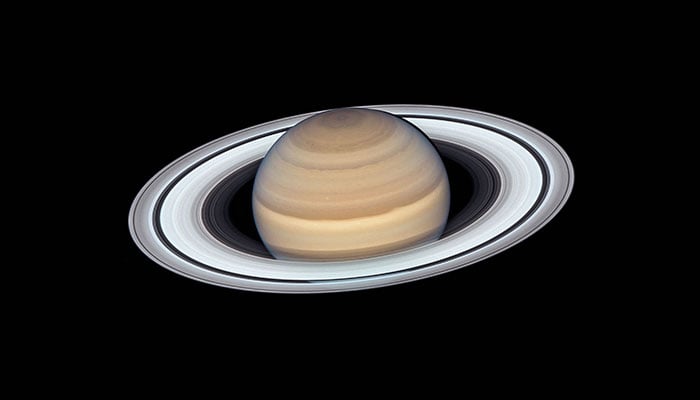Saturn beats Jupiter as planet with most moons after discovery of 62 new satellites
Jupiter has 95 moons, while Saturn now has 145 moons after the discovery of the new moons
May 23, 2023

A recent breakthrough has unveiled the existence of 62 new moons orbiting Saturn, taking the total number of Saturn's moons to 145 moons, surpassing Jupiter's count of 95.
Led by Edward Ashton, an international team of researchers employed an innovative technique known as "shift and stack" to identify these moons, some as small as 1.5 miles in diameter. This remarkable discovery offers valuable insights into the historical impact of celestial collisions within Saturn's orbit.
For a considerable period, Jupiter held the title for the most moons in the solar system. However, with the revelation of these 62 newfound moons, Saturn has dethroned Jupiter, securing its position as the planet with the highest number of natural satellites.
The scientific community discovered these moons through the collaborative efforts of an international team, with Edward Ashton, a post-doctoral researcher at Taiwan's Academia Sinica Institute of Astronomy and Astrophysics, spearheading the research. The team intends to release their comprehensive findings within the next couple of months.
Edward Ashton likened the process of tracking these moons to playing a complex game of Dot-to-Dot, where each appearance of a moon in their data must be connected to form a viable orbit. With numerous "games" taking place simultaneously on the same page, discerning which dot corresponds to each puzzle poses a formidable challenge.
All 62 of the recently found moons are categorized as irregular moons due to their eccentric and inclined orbits, often exhibiting retrograde motion. Astronomers believe these captured objects were ensnared in Saturn's gravitational influence aeons ago. Saturn's moons typically form coordinated orbital groups based on their tilt, with three prominent groups identified as the Inuit, Gallic, and Norse.
The newly discovered moons belong to one of these groups. Scientists hope that the increasing knowledge about Saturn's moon collection will unravel the mysteries of past collisions and shed light on its captivating history.









